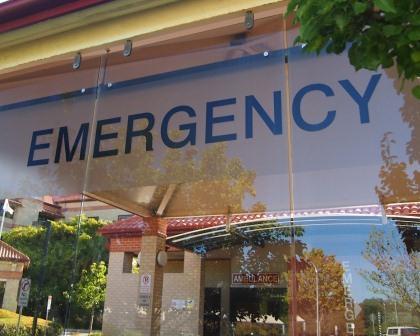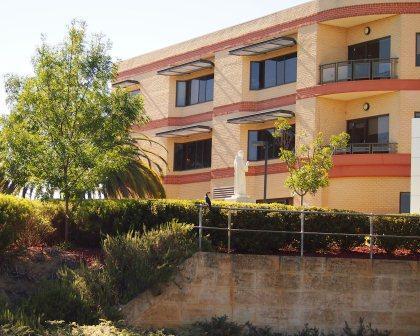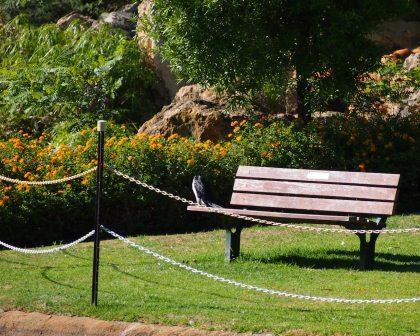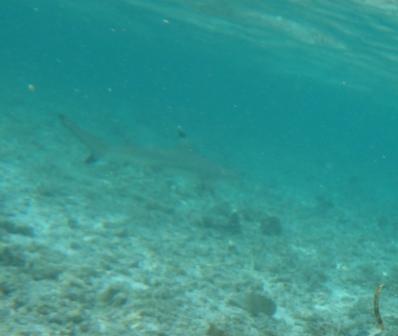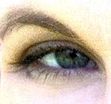Demelza Carlton's Blog, page 46
May 9, 2013
Water and Fire Wildlife – Wombats to Shags
Some of the land wildlife that feature in Water and Fire deserve a feature, too.
From the shag on a rock in the right position (on my lunch break, a short walk from my office, too!) to the presumed extinct thylacine, there’s plenty of wildlife in the book:

A shag on a rock

Shags on a rock
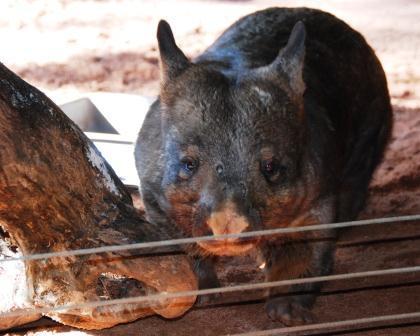
“Did someone say wombat?”

A real Thylacine
It’s a real thylacine, though he is long dead and has since been stuffed.


May 6, 2013
Deep Change
“You must leave soon, for time is of the essence. I fear great changes are happening in our ocean and the ocean’s gift alone may not ensure our survival. We need greater knowledge than we yet have. Without this knowledge, how do we prepare for the worst?”– Ocean’s Gift
The changes in the deep are far from fiction.
Climate change bringing with it increased storm frequency and intensity, warming waters;
Earthquakes and tsunami; and
Indian Ocean sea creatures heading further south.
Scientists and policymakers worldwide are trying to understand the changes in our planet.
How can we slow them, or how can we survive them?
It’s no wonder the mermaids want to come ashore to find out more. Their lives and future depend on it, too.


April 29, 2013
Ute Tribute
The first utes – okay, Ford Coupe utilities – were manufactured in Australia in the 1930s, to be passenger cars and farm vehicles. Yep, to carry people and pigs.
A versatile vehicle in the past, the ute has become one of the most well-known cars in Australia. Maybe it’s the pull of the powerful V8 engine or the tray in the back that’s big enough to hold a queen-sized mattress. Whether it’s Holden, Ford, Toyota or any other model, a ute can pretty much do anything.
It’s a farm vehicle.
A car for going to the pub.
Or even a display unit for a car-boot sale.
Plus, it’s a work vehicle, for tradies in the city or in the middle of nowhere.
Rumour has it that utes exist in other countries, too, under strange names like “pickups” and “El Caminos.” These rumours have yet to be confirmed.
A ute is a ute. End of story.
Except when there are mermaids involved…
But to know what happens with mermaids and utes, you’d have to read Ocean’s Gift.


April 26, 2013
Ocean’s Infiltrator – Three days to go!
Ocean’s Infiltrator release date: 30 April 2013

Sexy mermaids surface once more, to sing up chaos on ship and submarine, sea and shore.
Joe survived the dolphins at the Abrolhos, but he has fish in his head and his phone. How long will the mermaids let him live, now he knows their secret?
Vanessa‘s voice deals death and destruction with a single song. Will she change her tune to save humans or let them die?
Laila and Cantrella travel west to meet their sisters in the Atlantic Ocean, but the warm welcome they receive is shallower than the surrounding seas.
Mysterious Alexandre – who is he and what happened to him?
A story about seduction and sharks, parenthood and penguins, with plenty of beer and boobs to keep it interesting, at some coral islands off the coast of Western Australia, plus a few other places, too.
Trouble, take two. This is Demelza’s second contemporary fantasy book in the Ocean’s Gift series, with more mermaids and mayhem than ever.
You’ll never look at mermaids the same way again.


April 24, 2013
The Battle of Cocos
On 9 November 1914, the first Australian naval battle took place, starting at Direction Island at the Cocos (Keeling) Islands. It was the Battle of Cocos, between the HMAS Sydney, the SS Emden and a captured coal vessel, the Buresk.
The Sydney and the Emden engaged off Direction Island, before steaming off to North Keeling, where they exchanged fire until the Emden was disabled.
The acrid scent of guns and explosives, the staccato of weapon-fire and the screech of stressed steel as a projectile found its mark. Gun-smoke and steam from the ships’ boiler-engines wreathed the scene like fog from colder climates.
At 11.15 am the Captain of the Emden ran his vessel aground on the reef, the keel screeching and shattering as the waves ground it flat. Smoke rose from the deck.
The Sydney spotted another ship and moved out of range of the Emden to attack again. The Sydney fired on the Buresk. The German crew aboard the Buresk scuttled their vessel, opening up the seacocks, before they took to the boats.
Coal dust spread like a dark cloud of corruption beneath the surface as the Buresk descended to the sea floor.
On both the Emden and the Sydney, 138 people died that day and 82 were wounded.
No human accounts include the deaths of two mermaids and the wounding of another. Nor do they include the eight-year-old mermaid who drove men to madness.
“The Council will believe that the humans caused this disaster on their own and that you fled as the other girls did. No child in living memory could sink a ship with just her voice – and no lone adult could sink two.”
– Sephira, Ocean’s Infiltrator


April 22, 2013
Sirena’s Storm
19 February, 1921. A cyclone approached the Houtman Abrolhos Islands with gale force winds and fierce swell that would demolish jetties and boats alike.
Four fishing boats huddled off Rat Island for the night, anchored and chained securely against the storm. For the Columbia, it wasn’t enough.
The Columbia’s mooring chains broke before dawn and she drifted, threatening to overturn in the waves. The waves won, throwing the two men aboard into the water. One was the skipper, Felice Miragliotta. The other was Giuseppe Benvenuto, his mate. Felice tried to swim a line ashore to save his mate but lost sight of him in the waves as the current dragged the rope from his hand.
No one ever saw Giuseppe alive again.
No one except Sirena, a mermaid in Ocean’s Gift…
You’ll never look at mermaids the same way again.


February 2, 2013
Nightmares of Caitlin Lockyer
I’ve been writing a novel for eighteen years – that’s long enough for the book to legally drink alcohol in Australia.
Normally, when a twelve-year-old has a nightmare, she (or he) would find some way to calm down and get back to sleep. I decided to write it down. The nightmare kept recurring over several nights with slight variations and I couldn’t stop thinking about them, even during the day. I started to turn my dreams into a story. A terrible one full of cliches, but nevertheless my first novel.
I even submitted it to a publisher, age 12. One of the staff at the publishing house was kind enough to send me a refusal letter, giving me feedback as to why my book was not suitable for publication at that time.
Eighteen years later, my nightmares have changed, as have I. The little 30-page manuscript I submitted has grown more than I have, into a story that will be posted in full on Wattpad – Nightmares of Caitlin Lockyer. I update it with new chapters every Wednesday, Friday and Sunday, until the book is complete.
Now, for those who’d like a little more background, the hospital where Caitlin’s story begins does exist. I took a camera there to take photos one Saturday morning:


October 28, 2012
Water, Fire and Octopi
Clams spit when they close. It’s not bad manners, it’s just what they do, pushing all the extra water out so they can close. It makes them easy to spot and photograph at low tide. I took the above photo at low tide on Town Beach in Exmouth, Western Australia.
Walking down the beach, looking for more, I saw a particularly big spurt of water. Hoping for a giant clam and a great photograph, I circled around to a good vantage point. I readied my camera and jumped back as a jet of water went a metre up in the air, straight toward my camera lens.
It wasn’t a clam.
I took some more pictures, dodging more streams of water, before it moved as I did and I realised what my adversary was: an octopus.
[image error]
[image error]
[image error]
[image error]
[image error]
[image error]
[image error]
[image error]
[image error]
[image error]
[image error]
[image error]
[image error]
[image error]
[image error]
[image error]
[image error]
[image error]
I looked him up. This guy is a Day Octopus (Octopus cyanea), called this because they hunt during the day. They can camouflage incredibly well by changing colour really quickly. I saw this one turn from red to purple to yellow, which is where I lost him because he was the same colour as the sand.
Octopi are very intelligent. Laboratory experiments have placed them as having a similar intelligence to a small human child. I can certainly vouch for that – I felt like I was facing down a pre-schooler with a water pistol.
In my short story, Water and Fire, Aidan is compared to an octopus folding itself into a rock cleft and one jetting away in a hurry. Well, this guy did both and I managed to catch it on camera. Funny, the octopus was a red-head, too, just like Aidan. But Aidan had better manners.


October 16, 2012
Not Another Shark Attack
I won’t launch an attack on sharks. I like sharks – they’re big, mysterious fish; they haven’t changed much in millions of years; and they taste delicious when they’re dead, filleted and fried.
Sharks seem to be the flavour of the month lately, and not just at the fish and chip shop down the road. The media have tagged my home town of Perth as the “shark attack capital of the world” because of the number of fatal shark attacks off the Western Australian coast in the last year. It’s come to the point where researchers have a huge amount of money to tag the sharks themselves. Yes, we’ve got sharks on Facebook and Twitter.
There are lots of sharks in the ocean and lots of shark species off the Western Australian coast. From records of past shark attacks, there’s only three out of 160 species who tend to snack on humans – great white sharks, bull sharks and tiger sharks, all of which swim up and down the WA coast.
Bull and tiger sharks are part of the group of sharks known as “whalers” and they are fair game for recreational fishers in most Western Australian waters, provided they meet the legal size limits. Bull sharks even swim up the Swan River – there’s a bull shark nursery in the Swan River, east of the Narrows Bridge. Tiger sharks are commonly seen up at the Houtman Abrolhos Islands and Ningaloo Reef, both off the Western Australian coast. When they get older, the stripes tend to fade, so they’re not as recognisable as tiger sharks. A shark attack at the Abrolhos in 2005 was blamed on a great white shark, but the length was given as 6 m. Tiger sharks get that big, but whites tend to only get up to 5 m, plus they don’t visit the Abrolhos as much.
The size limit on catching whaler sharks is 1.8 m, because sharks bigger than 1.8 m may have high levels of heavy metals. Someone should tell Vanessa how lucky she is that the Fisheries staff weren’t around when she caught herself a tiger shark. The fines for catching fish outside the rules is huge – numbered in the thousands of dollars. Plus, Vanessa could have lost the Siren and her fishing licence.
Great white sharks are protected under Australian Commonwealth law. That means no white shark fillets. Humans in Australia aren’t allowed to catch white sharks. No one’s told the sharks that they aren’t allowed to catch humans, though, and it doesn’t look like it’s high on anyone’s to do list. Whites are considered to be the sharks responsible for the recent fatal shark attacks off the WA coast.
There is another side, though. The sharks have been swimming in the oceans since before there were humans. I understand they prefer sea lions to humans and attacks on humans tend to be a case of mistaken identity. After all, Joe was swimming with sea lions when he had a close encounter with a tiger shark at the Abrolhos. He was also swimming in the evening – the time sharks hunt. Sharks hunt on cloudy days, too, because the light’s similar to dawn and dusk. Ask any photographer. So, all in all, swimming at night in deep water with sea lions is not the brightest thing to do, but that’s Joe for you.
Yes, I’ve willingly been swimming with sharks. I even sought one out at Cocos for the photo at the top of this post.
Reef sharks are little, with the one in the photograph above perhaps a metre long. I’ve heard of a small number of shark attacks by reef sharks, but none of these were fatal. I’m not even sure if they drew blood.
If a large shark is about to seriously injure or kill a human, I believe there is some justification for killing that shark in defence of the human. But I do know that catching a shark big enough to kill a human is no mean feat.
Unless, of course, the person catching the shark is Vanessa. Then all bets are off - the question is whether Vanessa lets the shark swim away or carves it up for supper.


October 9, 2012
Humpback Whales – A Sight to See
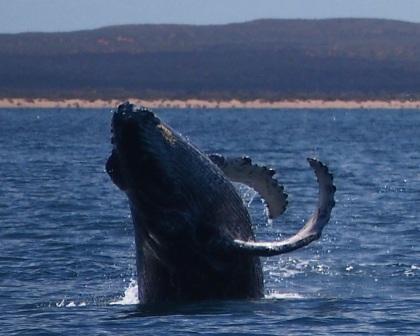
Baby whale dancing in Exmouth Gulf, Western Australia
More than 40, 000 humpback whales travel from Antarctica to Australia every year. They swim up the coast, blowing air out of their blowholes, breaching, breeding and birthing their calves. They even sing – I’ve heard them both above and below the water. Whale song is as eerie in person as it sounds recorded.
The Australian humpback population isn’t as even as you might expect. I took it for granted that humpback whales would flock in their thousands to holiday off the Queensland coast, in the Great Barrier Reef, like so many human tourists. They do – at least 10,000 whales, known as “Population E”, migrate in winter up the eastern coast of Australia to the largest barrier reef in the world.
The remaining 30,000 (possibly more) swim from Antarctica up the Western Australian coast, all the way to Camden Sound, near Broome. This is the largest humpback whale population in the world.
Encountering a whale in the Geelvink Channel between the Houtman Abrolhos Islands and Geraldton isn’t a rare occurrence in winter and spring, when at least 30,000 Population D whales are headed north for the winter and south again for the summer. I’ve seen whales breaching, flying over this Channel in a charter plane from the Abrolhos in July.
Whales travel to Australia’s northern coasts to mate and, the following year, to give birth to the resulting babies. During their long swim, humpback whales rest in areas like Exmouth Gulf and the waters to the north of Rottnest Island. In these resting areas, the baby whales play and learn some of the behaviours they will need to know as adults, like breaching.
Back in 1999, Populations D and E were estimated to be no bigger than 14,000 and 4,000, respectively. In the intervening thirteen years, both populations have more than doubled. It’s likely that bans on commercial whaling and other human conservation measures have helped whale populations to recover.
Or could it really be because a mermaid midwife has been assisting in whale births for that time? For the answer to that, I suggest you ask Belinda.
The photos below and above I took last week, on the 1st and the 3rd October 2012.
[image error]
[image error]
[image error]
[image error]
[image error]
[image error]
[image error]
[image error]
[image error]
[image error]
[image error]
[image error]
[image error]
[image error]
[image error]
[image error]
[image error]
[image error]
[image error]
[image error]
[image error]
[image error]
[image error]
[image error]
[image error]
[image error]




